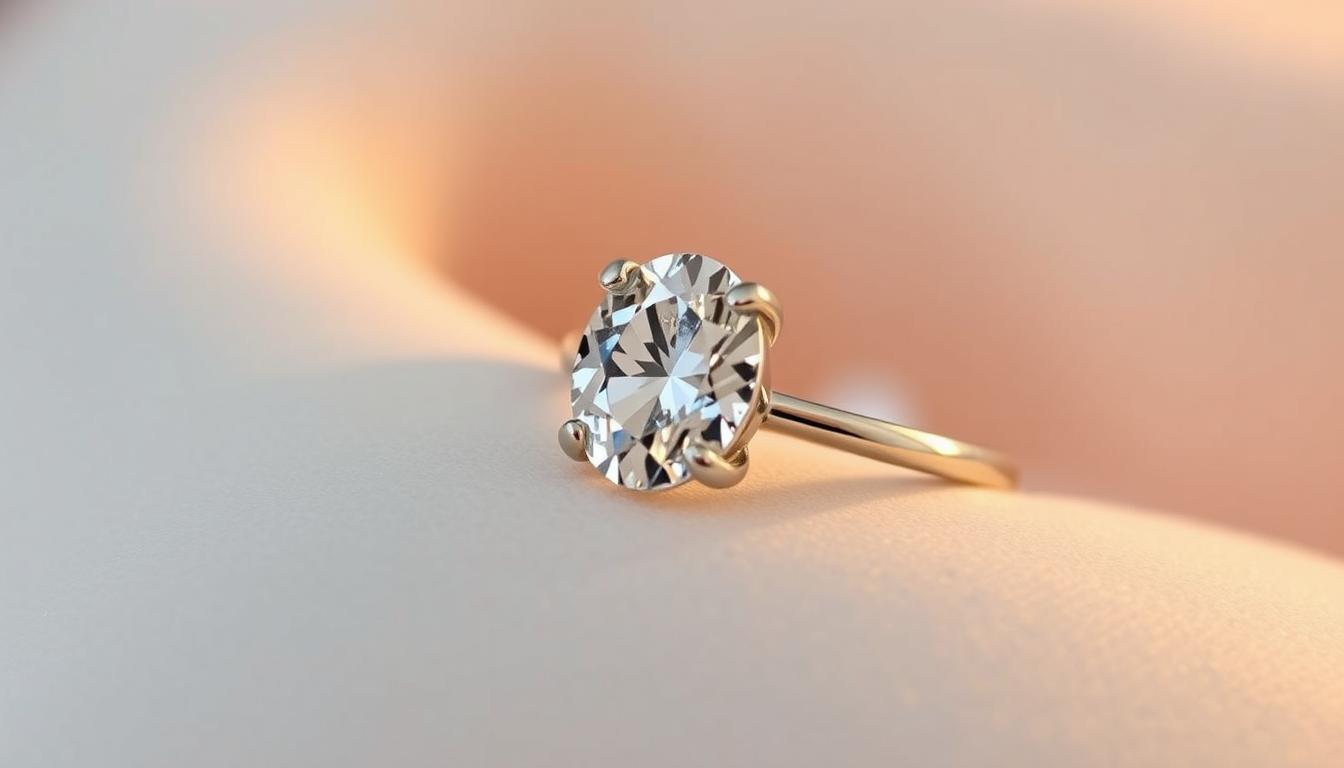Are you looking for a beautiful, ethical, and affordable engagement ring? Consider lab grown diamonds, a modern alternative to traditional mined diamonds. With the rise of lab grown diamonds, you can now own a stunning diamond at a lower price without compromising on quality.
Liori Diamonds offers a wide selection of GIA-certified lab grown diamond engagement rings, providing you with confidence in your purchase. These diamonds have the same physical and chemical properties as mined diamonds, but with a more environmentally friendly and socially conscious footprint.
Discover the benefits of choosing GIA certified lab grown diamonds and learn how to make an informed purchase decision.
What Are Lab Grown Diamonds?
Lab grown diamonds are revolutionizing the jewelry industry with their sustainable and ethical production methods. These diamonds are created using advanced technology that replicates the natural process of diamond formation, resulting in a product that is chemically, optically, and physically identical to mined diamonds.
The Science Behind Lab Created Diamonds
The creation of lab grown diamonds involves sophisticated technology that mimics the natural processes that form diamonds in the earth’s crust. This process occurs in a controlled environment, allowing for the production of high-quality diamonds with minimal environmental impact.
Chemical Vapor Deposition Process
The chemical vapor deposition (CVD) process is a key method used in the production of lab grown diamonds. This process involves introducing a hydrocarbon gas mixture into a vacuum chamber, where it is ionized into plasma using techniques such as microwaves or lasers. The carbon atoms from the plasma then attach to a diamond seed crystal, gradually building up the diamond atom by atom. The CVD process allows for greater control over the diamond’s properties, enabling the production of larger, clearer stones.
Lab grown diamonds produced through CVD often require post-growth treatment to enhance their color. The chemical vapor deposition process has become the preferred method for many lab diamond producers due to its ability to produce high-quality diamonds with consistent characteristics. As this technology continues to advance, it is enabling the creation of larger and higher quality diamonds, further expanding the possibilities for lab grown diamond production.
GIA Certified Lab Grown Diamonds: The Gold Standard
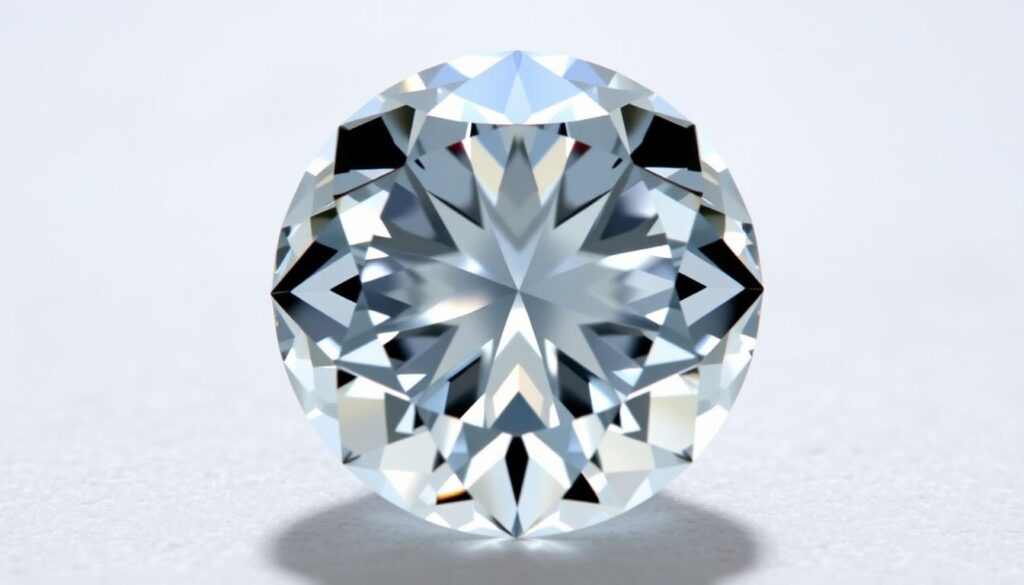
When it comes to lab grown diamonds, GIA certification is the gold standard that ensures excellence and trustworthiness. GIA certified lab grown diamonds are distinguished by their exceptional quality and the detailed reporting that accompanies them.
What Makes GIA Certification Special
GIA certification is special because it provides an unbiased assessment of a diamond’s quality. The GIA Laboratory-Grown Diamond Report includes a comprehensive evaluation of the diamond’s 4Cs (carat, color, clarity, and cut), as well as its growth type and any post-growth treatments.
Understanding the GIA Laboratory-Grown Diamond Report
The GIA Laboratory-Grown Diamond Report is a digital-only document that provides a detailed analysis of the lab grown diamond. It includes a plotted clarity diagram that maps inclusions and blemishes, a laser inscription on the diamond’s girdle with the term “Laboratory-Grown” and the GIA report number, and information about any post-growth treatments applied to the diamond.
Consumers can verify the authenticity of their GIA report using the Report Check service, ensuring that their lab grown diamond is genuine and meets the highest standards of quality.
Lab Grown vs. Natural Diamonds: Key Differences
While lab grown and natural diamonds share some similarities, their differences are significant and worth exploring. To the naked eye, lab grown diamonds are nearly indistinguishable from natural diamonds, even under standard jeweler’s loupes.
Both types of diamonds are graded using the same 4Cs criteria: cut, color, clarity, and carat. Advances in lab diamond technology have eliminated earlier quality issues, allowing for exceptional clarity and color.
Physical and Chemical Properties
Lab grown diamonds have the same physical and chemical properties as natural diamonds. They are made of pure carbon, crystallized in a diamond structure, making them equally durable and resistant to wear.
Lab grown diamonds are created using advanced technology that replicates the natural process of diamond formation, resulting in diamonds with similar properties to natural diamonds.
Visual Appearance and Quality
The visual appearance and quality of lab grown diamonds are comparable to those of natural diamonds. Lab grown diamonds can be created in a wide range of colors, including rare fancy colors, and can achieve the highest clarity and color grades.
The cutting and polishing process for lab grown diamonds is identical to that of natural diamonds, ensuring that any differences in appearance are due to individual diamond characteristics rather than their origin.
Environmental Benefits of Lab Grown Diamonds
One of the most significant advantages of lab grown diamonds lies in their minimal environmental impact. The production of lab grown diamonds eliminates many of the environmental concerns associated with traditional diamond mining.
Eco-Friendly Production
Lab grown diamonds are created using advanced technological processes that significantly reduce the carbon footprint compared to traditional mining methods. The production of grown diamonds requires less energy and water, and it generates minimal waste.
Some of the key environmental benefits of diamonds include:
- Reduced energy consumption
- Minimal water usage
- Lower carbon emissions
- No habitat destruction or disruption of ecosystems
Efficient Supply Chain
The supply chain for lab grown diamonds is more transparent and efficient, reducing the risk of environmental damage. By choosing lab grown diamonds, consumers can be confident that their purchase is not contributing to environmental degradation.
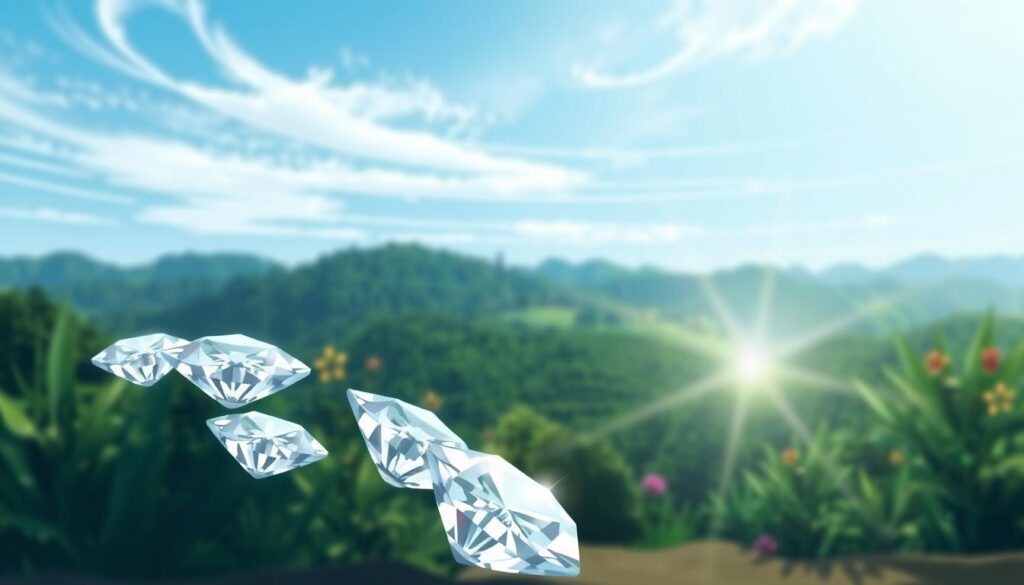
According to our commitment to being Ethically Sourced, every lab-grown and natural diamond is carefully chosen to meet the highest standards. This ensures that our lab grown diamonds not only offer environmental benefits but also adhere to strict ethically sourced practices.
By opting for grown diamonds, consumers can enjoy the beauty and luxury of diamonds while supporting sustainable and responsible practices.
Price Comparison: Lab Grown vs. Mined Diamonds
When considering a diamond purchase, understanding the price difference between lab grown and mined diamonds is crucial. Lab grown diamonds typically offer a more affordable option without compromising on quality or appearance.
Why Lab Diamonds Cost Less
Lab grown diamonds cost less primarily due to the efficiencies in their production process. Unlike mined diamonds, which require extensive mining operations, lab grown diamonds are created using advanced technology that replicates the natural process of diamond formation. This method significantly reduces production costs, allowing for a lower price point for consumers.
Value Retention Considerations
The resale market for lab grown diamonds is still in its developmental stages, and there’s a perception that they may depreciate more quickly than natural diamonds. However, many consumers prioritize the initial value and ethical benefits over potential resale price. As the lab diamond market continues to evolve, it’s likely that the price stability of lab grown diamonds will improve.
- Lab grown diamonds offer significant initial cost savings.
- The resale market is still developing.
- Consumer priorities often focus on upfront value and ethical considerations.
- The evolving market may lead to better price stability in the future.
Popular Cuts for GIA Certified Lab Grown Diamonds
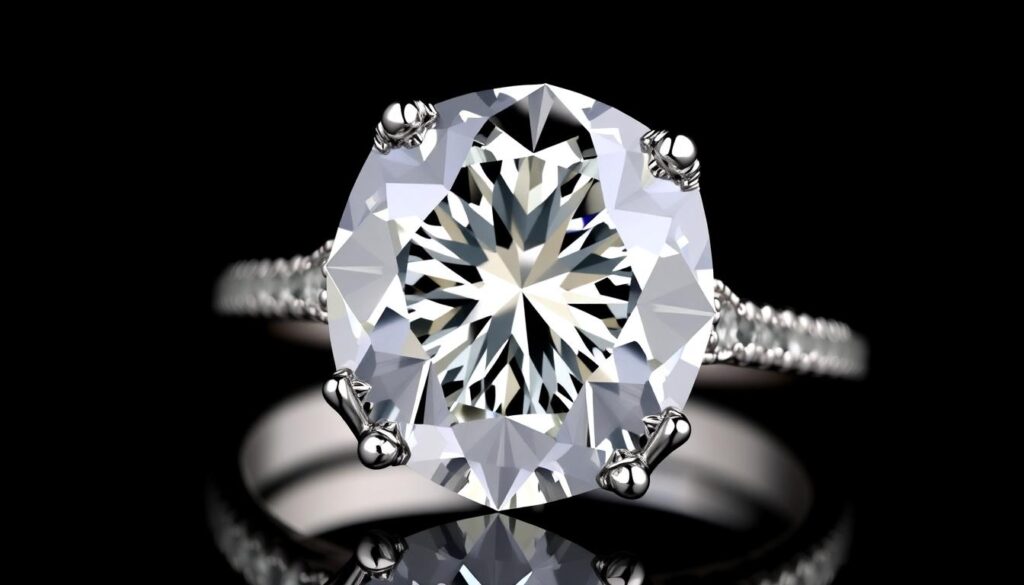
GIA certified lab grown diamonds come in a variety of cuts, each with its unique charm and characteristics. The cut of a lab diamond significantly impacts its brilliance and overall appearance.
Timeless Round Brilliant Cuts
The round brilliant cut remains a timeless favorite among lab grown diamonds. Its symmetrical facets and precise proportions maximize light reflection, creating unparalleled sparkle.
Fancy Cuts: Oval, Emerald, and Radiant
Fancy cuts like oval, emerald, and radiant are gaining popularity for their unique appeal. For instance, the Lab Diamond 4.19ctw GIA Certified Emerald Cut engagement ring showcases the elegance of emerald cut lab grown diamonds.
Trending Diamond Shapes in 2023
In 2023, trends lean towards elongated cushion cuts, pear-shaped, and marquise cuts. These shapes offer a distinctive look, with lab grown diamonds providing an affordable and sustainable option. The Lab Diamond 9.44ctw GIA Certified Oval Cut is a prime example of a trending oval cut.
The 4Cs of Lab Grown Diamonds
The 4Cs of lab grown diamonds provide a comprehensive framework for evaluating their quality. This grading system assesses the diamond’s cut, color, clarity, and carat weight, giving consumers a thorough understanding of their purchase.
Cut Quality Assessment
A well-cut lab grown diamond can refract light better, appearing more brilliant and fiery. Cut quality is assessed based on factors like proportions, symmetry, and polish.
Color Grading in Lab Diamonds
Lab grown diamonds are available in a range of colors, from colorless to fancy colors. The color grading scale assesses the degree to which a diamond is colorless.
Clarity Standards
Clarity refers to the presence or absence of inclusions and blemishes. The clarity scale ranges from Flawless (FL) to Included (I), with various grades in between.
Carat Weight Considerations
- Carat weight measures a diamond’s weight, not size, with one carat equaling 0.2 grams.
- Lab grown diamonds are available in various carat weights, making larger diamonds more accessible.
- The price of a diamond increases exponentially with carat weight due to the rarity of larger rough diamond material.
GIA Certification Process for Lab Grown Diamonds
For lab grown diamonds, GIA certification is a mark of quality and authenticity. The GIA certification process involves advanced technology and a detailed examination to ensure that these diamonds meet the highest standards.
Laser Inscription and Identification
One of the key steps in the GIA certification process is the laser inscription on the diamond. This inscription is a unique identifier that corresponds to the diamond’s GIA report, ensuring that the diamond can be traced back to its grading report. The Report Check Plus service allows consumers to easily download grading results and PDFs of multiple reports at once, enhancing the verification process.
Digital Reporting and Verification
GIA has adopted a digital-only reporting system for lab grown diamonds, which offers several benefits. Consumers can access and verify their GIA report online using the Report Check service. The digital reports contain all the same information as traditional paper reports but with enhanced security features to protect authenticity. This digital approach not only reduces environmental impact but also allows for immediate verification anywhere in the world. Retailers can provide customers with access to their diamond’s digital report, making it easier to verify the diamond’s quality and authenticity.
Lab Grown Diamond Engagement Rings
With the rise of lab grown diamonds, couples can now opt for stunning engagement rings that are both affordable and sustainable. Lab grown diamond engagement rings offer a unique blend of luxury and eco-friendliness.
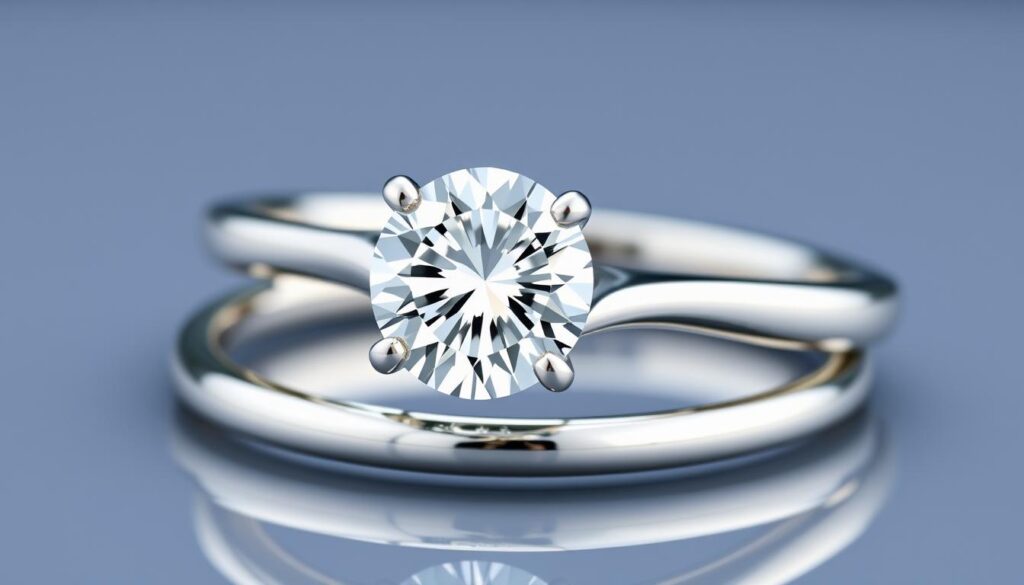
Popular Settings for Lab Diamond Rings
Lab grown diamonds can be set in various engagement ring settings, from classic solitaires to intricate halo designs. Popular choices include micropavé and cathedral settings that enhance the diamond’s brilliance.
Customization Options
Couples can customize their lab grown diamond engagement rings by selecting their preferred diamond and pairing it with a setting that suits their style. Options include engraving, birthstones, and unique design elements, allowing for a truly personalized piece of lab grown diamond jewelry.
Lab Grown Diamond Jewelry Beyond Engagement Rings
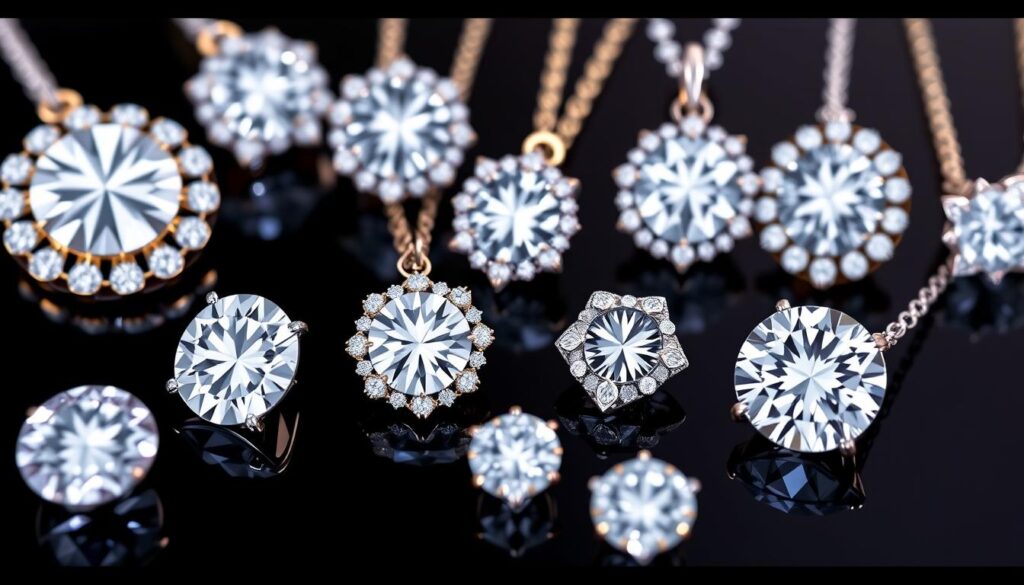
The world of lab grown diamond jewelry extends far beyond traditional engagement rings. Lab diamonds are used in a variety of fine jewelry pieces, offering consumers more options.
Wedding Bands and Anniversary Rings
Lab grown diamonds are also used in beautiful wedding bands and anniversary rings, symbolizing eternal love and commitment. These pieces are crafted with precision, ensuring a perfect fit and finish.
Fashion Jewelry with Lab Diamonds
Fashion jewelry featuring lab diamonds includes classic designs like tennis bracelets, line necklaces, and stud earrings. Statement pieces such as cocktail rings and pendant necklaces showcase larger lab diamonds, making a bold fashion statement. Lab diamonds have made fine jewelry more accessible to a broader market.
How to Care for Your Lab Grown Diamond
Caring for your lab grown diamond is crucial to maintaining its brilliance and longevity. With proper care, your lab grown diamond will continue to sparkle for years to come.
Cleaning and Maintenance Tips
To keep your lab grown diamond clean, use mild soap and warm water. Avoid harsh chemicals that can damage the metal or harm the diamond. Regular cleaning helps maintain its shine.
- Soak your lab grown diamond jewelry in a solution of mild soap and warm water.
- Gently scrub with a soft-bristled toothbrush to remove dirt.
- Rinse thoroughly with clean water and dry with a soft cloth.
Storage Recommendations
Proper storage is essential to prevent scratching and damage. Store each piece of lab grown diamond jewelry separately.
- Use a jewelry box with individual compartments or pouches.
- Consider anti-tarnish strips for jewelry boxes containing mixed metals.
- Keep your lab grown diamonds away from extreme temperature changes.
- Remove your lab grown diamond jewelry before swimming, exercising, or household cleaning.
By following these care tips, you can ensure your lab grown diamond remains a beautiful and cherished piece of jewelry.
Common Misconceptions About Lab Grown Diamonds
Lab grown diamonds have become increasingly popular, but several misconceptions surround them. Many consumers are misinformed about the characteristics and benefits of these diamonds.
Durability Concerns
One common misconception is that lab grown diamonds are less durable than natural diamonds. However, lab grown diamonds have the same physical and chemical properties as natural diamonds, making them equally durable. The durability of a diamond is determined by its crystal structure, which is identical in both lab grown and natural diamonds.
Resale Value Reality
Another misconception is that lab grown diamonds have no resale value. While it’s true that the resale market for lab grown diamonds is still developing, it’s not entirely accurate to say they have no value. All diamonds, whether lab grown or natural, typically depreciate when resold. Consumers should view lab grown diamonds as a purchase rather than an investment. Factors such as market demand and certification may affect their future resale value. Many consumers prioritize the initial value, ethical benefits, and personal enjoyment over potential resale value.
How to Verify GIA Certification
Verifying the authenticity of your lab grown diamond’s GIA certification is a crucial step in ensuring its quality and value. The GIA (Gemological Institute of America) is a renowned organization that provides certification for diamonds, including lab grown diamonds, based on their characteristics.
Using GIA Report Check
The GIA offers a convenient tool called GIA Report Check, which allows you to verify the certification of your lab grown diamond. By using this service, you can ensure that your diamond’s report is genuine and matches the details provided by the seller. The Report Check Plus feature enables you to easily download grading results and PDFs of multiple reports at once, making it a valuable resource for buyers and jewelers alike.
Identifying Authentic Certification
To identify authentic GIA certification for your lab grown diamond, look for the following features:
- Check that the laser inscription on the diamond matches the certificate number on the GIA report.
- Examine the format and appearance of the GIA report to ensure it aligns with genuine GIA documentation.
- Verify the security features that distinguish authentic GIA reports from counterfeits.
- Confirm that the 4Cs (cut, color, clarity, and carat) listed on the report match the actual characteristics of your lab grown diamond.
If you find any discrepancies, it’s essential to contact the seller or the GIA directly to resolve the issue. Purchasing from reputable retailers who provide genuine GIA certification is crucial for ensuring the authenticity and quality of your lab grown diamond.
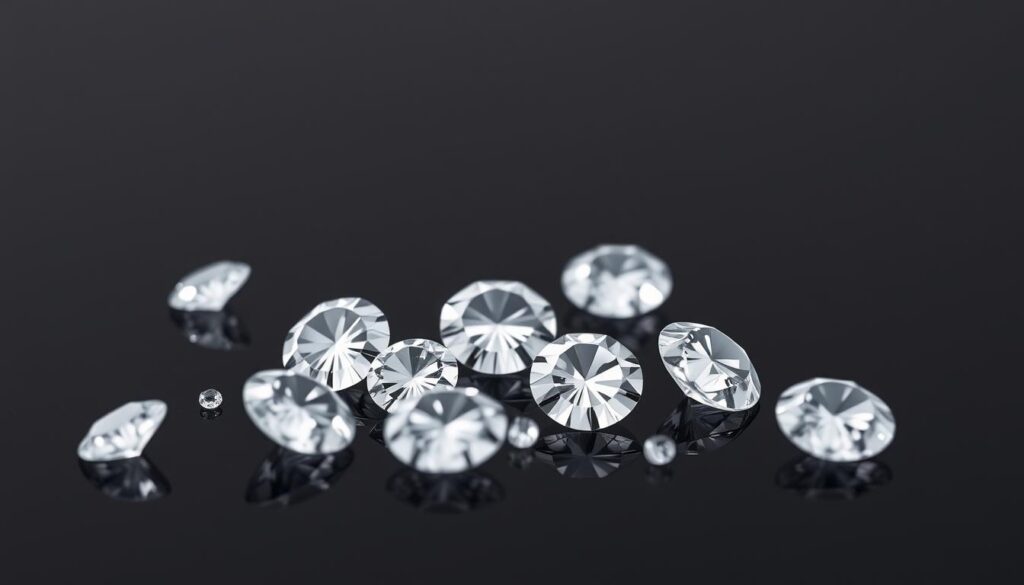
Choosing the Right Retailer for GIA Certified Lab Diamonds
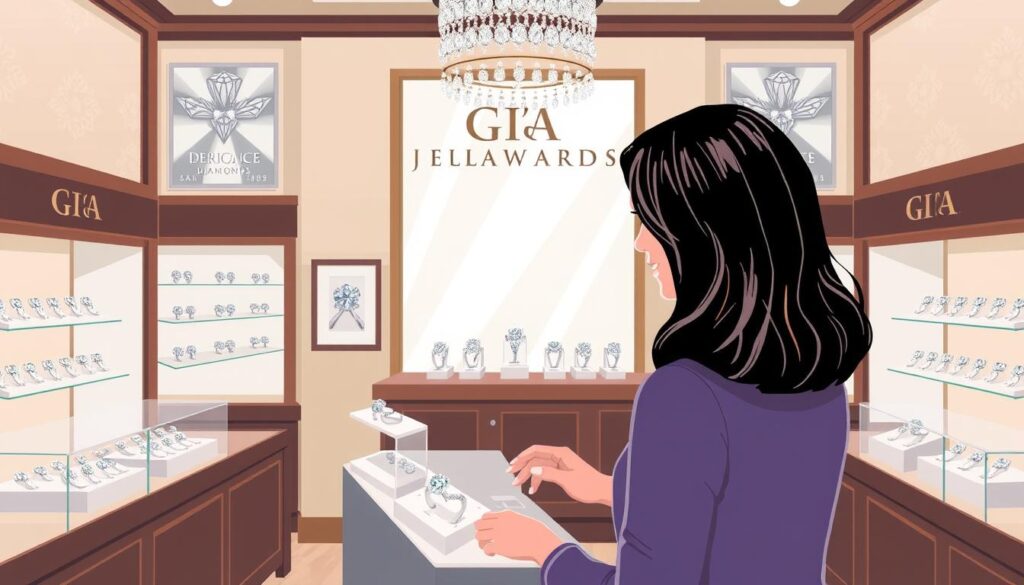
When searching for GIA certified lab grown diamonds, selecting the right retailer is crucial. A reliable retailer can provide a seamless shopping experience, comprehensive guarantees, and high-quality products.
Online vs. In-Store Shopping Experience
The choice between online and in-store shopping depends on personal preference. Online retailers offer convenience and often a wider selection, while physical stores provide the opportunity to see the diamond in person.
Return Policies and Guarantees
A comprehensive return policy is vital when purchasing lab grown diamonds. Look for retailers offering a reasonable return window, such as 60 days, and understand the conditions that apply. Additionally, consider the warranty and guarantee conditions provided, including coverage for damage or loss.
Some retailers also offer additional services like free resizing, cleaning, and maintenance, enhancing the overall value of your purchase. Understanding the shipping, insurance, and return shipping conditions is also crucial for a smooth transaction.
Investment Potential of Lab Grown Diamonds
Lab grown diamonds are not just an alternative to natural diamonds; they’re becoming a valuable commodity in their own right. As the technology behind lab grown diamonds continues to advance, their appeal to investors and collectors is growing.
Market Trends and Future Outlook
The market for lab grown diamonds is expanding rapidly, driven by increasing consumer awareness and advancements in production technology. This growth is expected to continue, with lab grown diamonds becoming an increasingly significant part of the diamond industry. Key factors influencing this trend include the price competitiveness of lab grown diamonds compared to natural diamonds and the ethical considerations that favor lab grown options.
- The demand for sustainable and ethically sourced products is driving the growth of the lab grown diamond market.
- Advancements in technology are improving the quality and reducing the price of lab grown diamonds.
- Investors are starting to recognize the potential of lab grown diamonds as a valuable commodity.
Considerations for Collectors
For collectors, lab grown diamonds offer a unique opportunity to acquire rare and unusual stones, such as fancy colored diamonds, at a lower price point than natural diamonds. Early examples of lab grown diamonds may also hold historical significance, making them valuable additions to a collection.
- Collectors can focus on the technological achievements represented by lab grown diamonds or their aesthetic qualities.
- Building a meaningful collection requires careful consideration of the diamonds’ provenance and certification.
- Personal enjoyment should be the primary motivation for collecting lab grown diamonds.
Conclusion: Making an Informed Decision
In the end, choosing a GIA certified lab grown diamond is not just about the stone itself, but about the values and priorities it represents. As you’ve learned throughout this article, lab grown diamonds offer numerous benefits, including a lower price point and reduced environmental impact.
When making your decision, consider the importance of understanding the 4Cs, certification, and retailer reputation. Ensure you’re working with reputable retailers who provide favorable conditions and authentic GIA certification. By doing so, you’ll be able to find a beautiful lab diamond that fits your budget and aligns with your personal values.
Ultimately, the choice between lab grown diamonds and natural diamonds is a personal one. With their identical physical and chemical properties, grown diamonds offer the same beauty and durability as natural diamonds, making them an attractive option for engagement rings and fine jewelry. As the industry continues to evolve, it’s likely that lab grown diamonds will play an increasingly important role in the world of fine jewelry.
